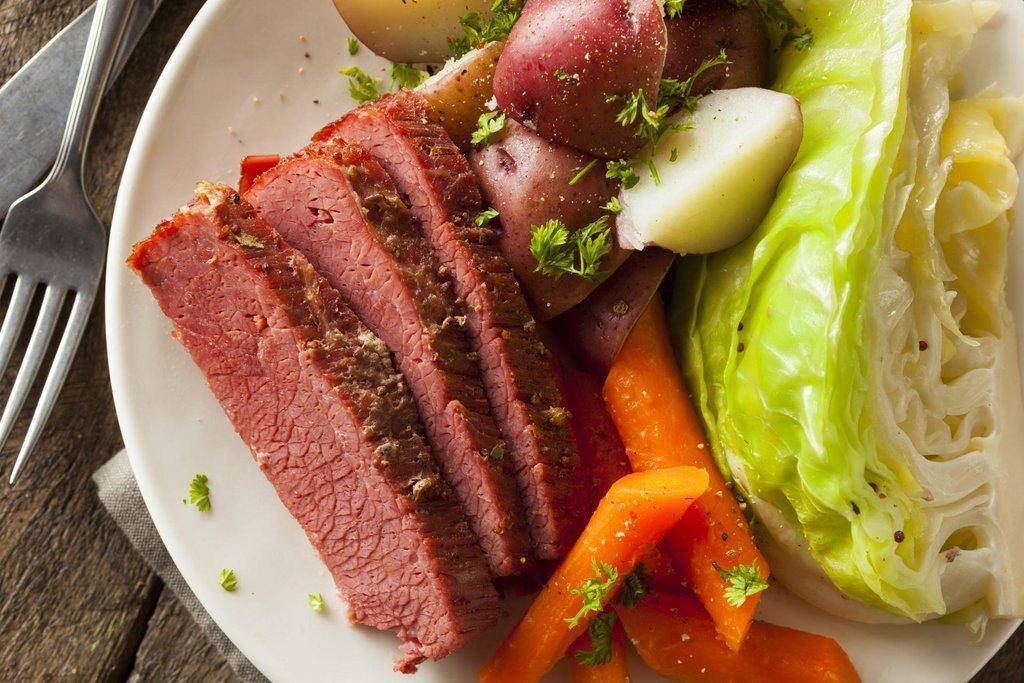By Kathy Riggs
Corned beef and cabbage, Ireland and leprechauns – all part of the St. Patrick’s Day celebration, right? Actually, these foods often associated with the holiday are not tied to Irish history at all. At any rate, it’s worth learning more about them and how to include them in your diet.
Cabbage – Eating it more than once a year is a great idea since it has no fat, is low in calories, high in vitamin C and is a source of fiber, calcium, iron and folic acid. The most common types are green and purple. Most cabbages have firm, compact leaves and are much heavier than leafy heads of lettuce similar in size.
Cabbage can be shredded and used raw as the main ingredient for coleslaw or added to green salads and tacos in place of lettuce. It can also be steamed and eaten hot with butter and seasonings or sautéed with other fresh veggies such as carrots, peppers or zucchini as a side dish. Boiling it may be the least tasty and nutritious way to prepare cabbage, regardless of what tradition touts. This is due to the leeching of color, flavor and nutrients out of the vegetable and into the water.
Another way to prepare cabbage is as sauerkraut, but making it is a time-consuming process. Sauerkraut is most often eaten with hot dogs or on Reuben sandwiches. Note that once it is brined, aged and becomes sauerkraut, the sodium content may be a concern for those worried about their blood pressure. Check out USU Extension Create Better Health for a cabbage patch stew recipe at https://extension.usu.edu/createbetterhealth/recipes/soups.
Corned Beef – “Corned” refers to the coarse grains of salt rubbed on the meat or added to a brine mixture. A flavorful curing brine can be made by mixing pickling spices such as mustard seed, allspice, coriander and garlic with water.
Commercially prepared corned beef can be purchased fresh from delis, butcher counters or in cans. These tend to have a similar appearance and taste. However, specialty shops that sell fresh corned beef or home recipes can vary substantially. Should you decide to make your own corned beef, recipes abound online, so choose one from a site you trust.
Brisket is the cut of beef used for making corned beef. A combination of pickling spices, kosher salt and brown sugar can be combined with curing salt (sodium nitrite), which adds the pink color to corned beef. After the brining solution is created, the process takes about five days, so be sure to take this into account if corned beef is on the menu for an upcoming family meal or gathering.
Brisket is considered a lean cut of beef and is relatively nutrient-dense, containing potassium, iron, zinc, key B vitamins and oleic acid. The dietary downside to making brisket into corned beef is the increased amount of sodium absorbed from the brine. Baking a simple seasoned brisket is a good alternative.
Back to the notion that eating corned beef and cabbage is not an Irish tradition at all – if you want to delve into Ireland’s culinary history, here are a couple of websites to visit: https://tinyurl.com/rhsksbce and https://tinyurl.com/jdmkedu8.
Whatever your St. Patrick’s Day cooking and dining traditions, remember that you can enjoy corned beef and cabbage year-round, not just for March meals.

